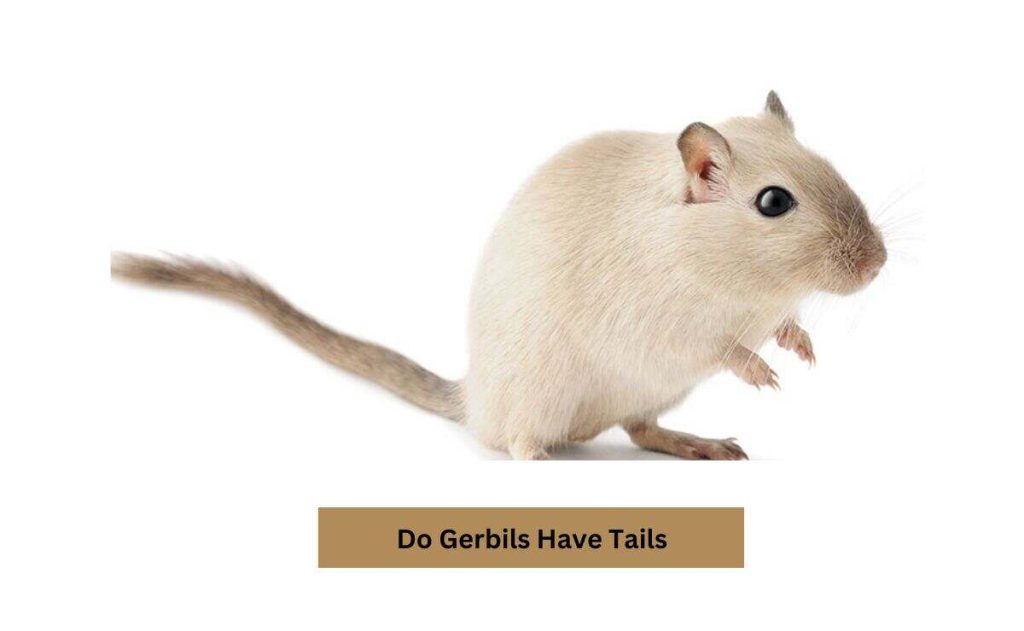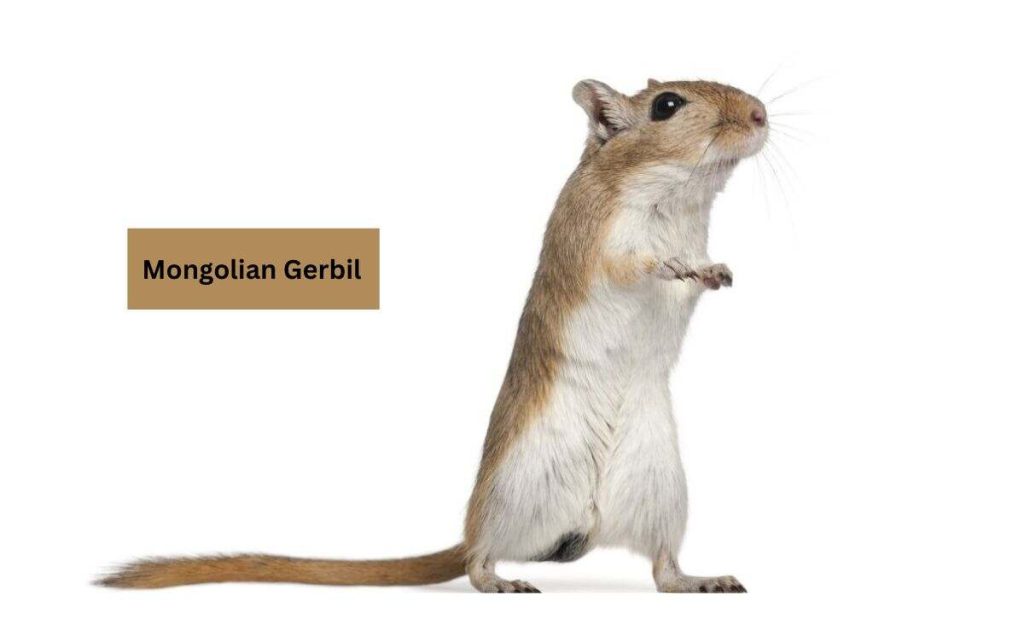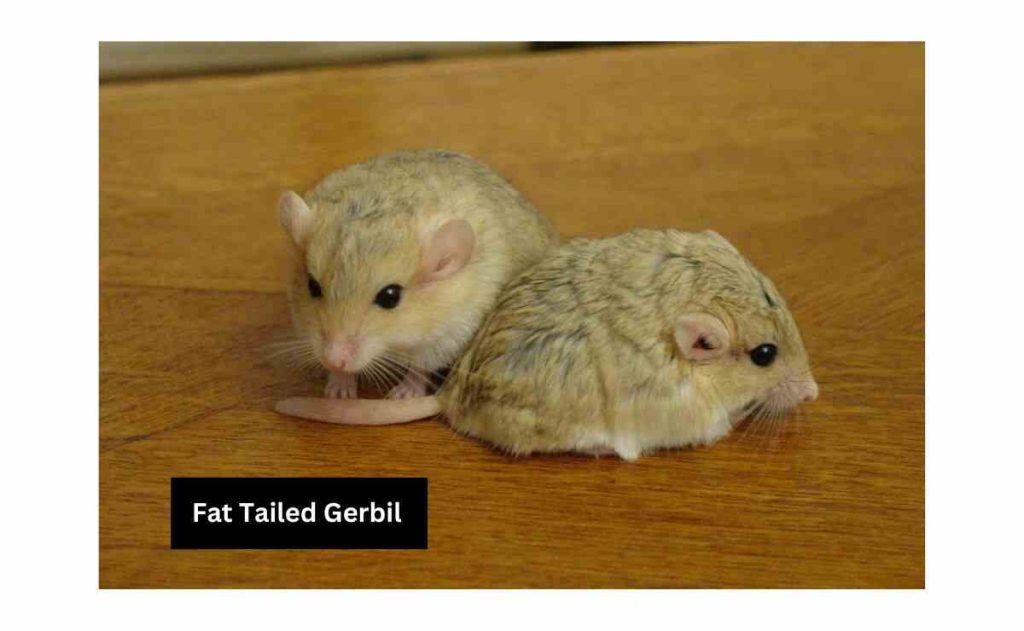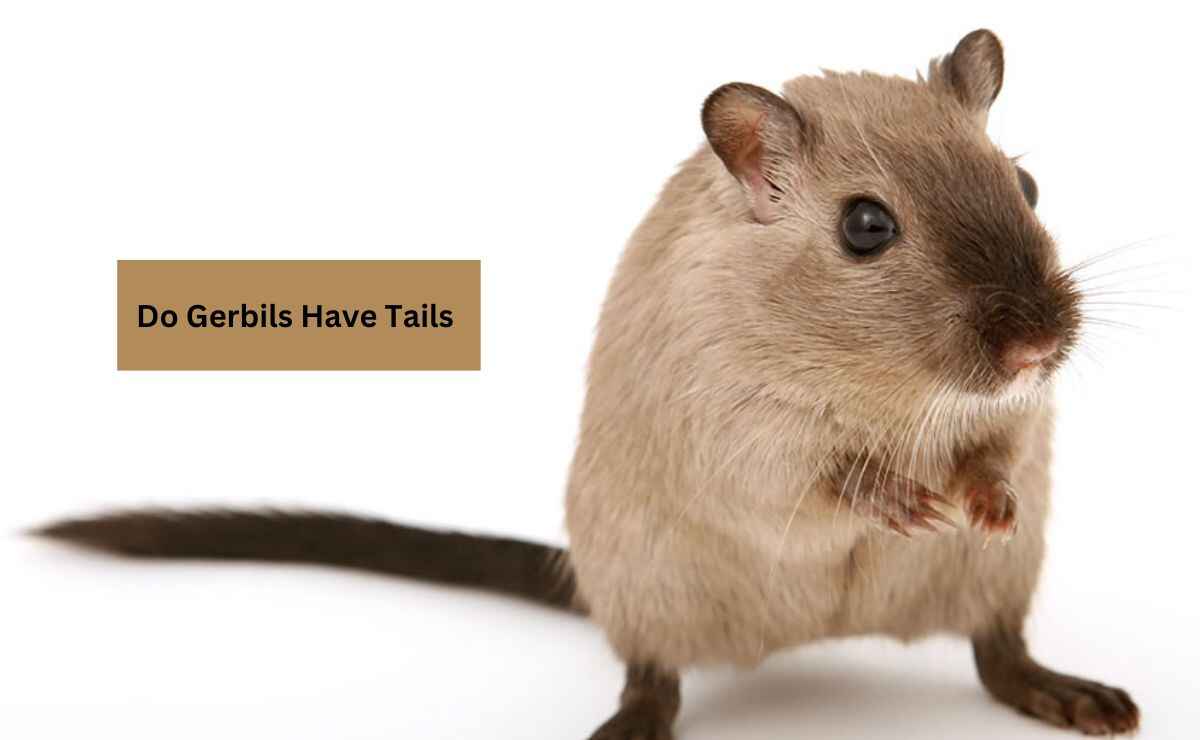When it comes to adopting small pets like gerbils, many people are curious about their unique features and body parts. One common question often arises do gerbils have tails?
Yes, gerbils have tails. But it can be long or short tail depending on their species. Some have long-furred tails and others have long bald tails. However, Mongolian gerbils have long furry tails that look more adorable and attractive. There are other species that have bald tails and most gerbil lovers are squeamish of it.
Do Gerbils Have Tails?

Gerbils do have tails and their tails are relatively short compared to other rodents. Gerbils’ tails are usually about the same length as their body, or slightly shorter. The length of a gerbil’s tail can vary slightly depending on the species, but in general, it is not very long.
Unlike some other rodents, gerbils do not have long, scaly tails. Instead, their tails are covered in fur, which makes them appear more like a small, furry appendage rather than a distinct tail.
Gerbils use their tails for various purposes. They can use their tails for balance while they are running or jumping, and sometimes they will even use their tails to communicate with each other.
What does a gerbil tail look like?
Gerbil tails are relatively long compared to the size of their bodies. The length of a gerbil’s tail is a distinguishing feature and can be quite striking. Depending on the species, gerbil tails can exhibit two distinct variations in terms of fur coverage:
Mongolian Gerbil

This species, often kept as pets, boasts a tail covered with a thin layer of fur. The fur on the tail is similar in color and texture to the fur on the rest of the body, creating a harmonious appearance.
The Mongolian gerbil’s furred tail blends seamlessly with the rest of its fur. The tail’s length and thickness of fur can vary among individuals, but it typically maintains a sleek and uniform appearance.
Fat-Tailed Gerbil

On the other end of the spectrum, the fat-tailed gerbil features a bald tail. Unlike the Mongolian gerbil, this species has a tail devoid of fur, revealing the underlying skin.
As the name suggests, the fat-tailed gerbil’s tail is bald. This baldness distinguishes it from the Mongolian gerbil and adds a unique characteristic to its overall appearance. The lack of fur on the tail is a notable feature of this species.
What do gerbils use their tails for?
Gerbils use their tails in distinctive ways. Sometimes they are used to send signals to their companions. When a vigilant gerbil detects impending danger, it utilizes its tail as an ingenious alert system. This rapid tail movement acts as a call to action for the group.
However, not all gerbil species use their tails to send signals. There is a unique subgroup exist which is fat-tailed gerbils. Their tails serve a different purpose—they function as storage depots for excess fat.
These gerbils have adapted to environments where food availability can be unpredictable. During times of abundance, fat-tailed gerbils accumulate surplus fat in their tails, causing them to visibly swell. This stored fat becomes a valuable energy reserve, sustaining them during lean periods when food resources become scarce.
Can gerbils lose their tails?
Gerbils can lose their tails which is a common health problem. It is also known as tail slip. It’s a condition of infection where their tail’s tissue gradually gets damaged. It typically begins with hair loss around the tail area, and as the condition progresses, the skin peels away, exposing the infection as it consumes the tail tissue.
Sadly, many gerbils can not handle the pain of infection and resort to self-mutilation by chewing off their tails. As a result a “tail slip.”
While tail loss itself is not fatal, it is a painful and distressing experience for the affected gerbil. Typically, the stump left behind after tail loss heals without complications, but it’s important to note that the tail won’t regrow.
However, it can be fatal if the infection from the damaged tail tissue finds its way into the gerbil’s bloodstream. If left untreated, this could result in the loss of your gerbil’s life within a matter of days.
One of the primary ways to prevent tail loss is by handling your gerbil with the utmost care. Always avoid picking up your pet by its tail. Instead, gently scoop them up by cradling their body to minimize stress and the risk of injury.
Ensure that your gerbil’s habitat is free from hazards that could lead to tail injuries. Sharp or protruding objects in their enclosure should be removed to prevent accidental harm.
Keep a close eye on your gerbil’s health. If you notice any signs of tail loss or infection, such as hair loss or changes in behavior, consult with a veterinarian immediately. Early intervention is critical in preventing further complications.
How to avoid loss of tails in gerbils?
Gerbils, like many other small rodents, have sensitive tails that are not designed for rough treatment. Unlike rats or mice, gerbils should never be picked up by their tails.
Gerbil tails serve as fat-storage appendages and have relatively delicate skin. Even slight roughness or mishandling can lead to damage. If the tail infection is left untreated, it can result in a tail slip.
So proper care is the only way to avoid loss of tails in gerbils. When interacting with your gerbil, avoid picking them up by their tails at all costs. This approach not only minimizes the risk of tail injury but also reduces stress for your furry friend.
If you have children in the household, it’s crucial to educate them about proper gerbil handling. Children’s curiosity can sometimes lead to unintentional mishandling, so gentle guidance is essential.
Gerbils are active and social animals, but they also need their alone time. If your gerbil is hibernating or resting, it’s best to leave them undisturbed. Excessive handling, especially during these periods, can cause stress and potential health issues.
What Does Tail Slip Look Like?
Tail slip in gerbils can manifest in different ways, depending on the severity of the condition. In mild instances of tail slip, you may observe a small patch of missing fur or skin on the gerbil’s tail.
This initial stage may not appear particularly alarming, but it’s a clear indication that something is amiss with your pet’s tail. Early detection is vital for treatment and prevention of further progression.
As the condition advances, tail slip becomes more apparent. In these instances, the entire tail becomes bald and develops a scaly appearance. The skin looks damaged, and there could be noticeable changes in the texture of the tail.
The most severe cases of tail slip are alarming and require immediate attention. In these instances, there is complete degloving of the tail. This means that the fur, skin, and underlying tissues have been extensively damaged or lost, possibly exposing bone or cartilage at the tail tip.
While it can sometimes be mistaken for other health issues, such as mites or ringworm, so ensures accurate diagnosis by a veterinarian.
Conclusion
Gerbils are adorable small rodents and their tails play a pivotal role in their survival strategies. These tails are not only visually pleasing but are also essential for various purposes, such as alerting others to danger and even storing fat.
While their long, furry tails are indeed a charming feature, it’s crucial to handle gerbils with care, as their tails are sensitive and susceptible to injury.
Related Posts
